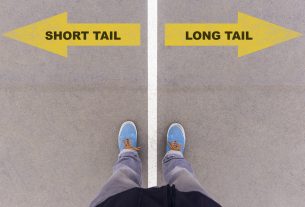The truth is this: if no one hangs around your web page then they’re not buying what you’re selling.
Bounce rate is one of the most significant factors in your analytics and knowing how to keep it down is a serious part of the battle.
We’re here to give you ten great tips on how to decrease bounce rate for your site.
Read on and we’ll show you how to make sure customers hang around long enough to buy what you’re selling.
1. Optimize Your Loading Speed
In addition to being an important variable in technical SEO, loading speed is a big factor in whether or not people will bounce from a page.
Ever closed a page because it took too long to load?
Congratulations. You just figured out why it’s such an important factor in making sure that your readers don’t just decide to dip before the page is done loading.
This is actually incredibly important for e-commerce pages. Many users have abandoned a shopping cart simply because it didn’t load quickly enough.
2. Format Your Content
When you’re writing out content, you need to keep in mind the fundamentals of web formatting.
Short paragraphs. Break things up with bullet points, headings, and pictures. Just, in general, use white space and keep the “wall of text” to a minimum.
It’s pretty easy to find a style guide if you’re not used to formatting content for the web already. Even those who will sit down and read a novel cover to cover aren’t going to want to wade into an enormous wall of text.
The internet gets read differently than books or even advertising brochures. People tend to just scan and try to find what they need.
Make it easy on your readers and fewer of them will leave.
3. Keep Widgets and Ads to a Minimum
The more complicated a web page looks, the more likely your user is to take off. Sidebar widgets are a big offender in this case.
When you’re working on your actual web formatting, try to keep things simple. While some widgets are both useful and almost unavoidable, cramming the sides of your page with a ton of extras isn’t going to help you any.
Even if your site relies on promotional advertisements for the bulk of its profit, you may want to tone things down a bit.
4. Avoid Pop-Ups
Anyone who grew up using the internet learned to hate pop-up ads at an early age. It can be enough to drive visitors away from your page entirely, especially if they’re not relevant to what the user is looking for.
There’s a problem here, however: pop-ups work — especially for increasing the size of an e-mail list.
So, if you must use them then you’ll want to consider how they affect your customers in the short and long run. Design them well and they’ll treat you much better.
Basically, just make sure that they’re well-designed and minimally intrusive. Avoid hard sales tactics and go for a simple e-mail opt-in which is easy to close and allow your user to get to the rest of the content.
You may also want to consider offering something of actual value for the customer, like an e-book on your niche, for their time in filling out the pop-up.
Even the best-designed pop-ups are going to get ignored sometimes and irritate users on others, however. How you decide to respond to that information is up to you.
5. Use a Single, Clear Call-to-Action
Your CTA is where you get conversions.
Even if you offer multiple services you’ll want to make sure that each page only includes one clear call-to-action. Doing otherwise can confuse your readers and many are going to bounce rather than stick around to figure out which one is the best for them.
If you do offer multiple services, then customize the CTA on each page to make sure that it’s relevant to what the user is looking for.
It’s a simple step, but a great way to make sure that your users get what they need each and every time they land on a page that you’re running.
6. Use Consistent and Useful Internal Links
The way that you internally link through your pages can have a big effect on whether users keep checking out your page.
Without internal links your page is likely to have a higher bounce rate than you’d expect.
With too many… well, you’re going to get the same effect in the long run.
We’ve all seen pages which link to their own content dozens of times in a post. That’s not useful and that kind of blatant self-promotion does nothing to build user trust.
If you have a great piece of content that you think the reader of another piece will find useful you should link to it.
More important: stay consistent and relevant. Your user’s experience is the most important part here and using irrelevant anchor text or just linking to another of your pages constantly looks bad.
This is where the cornerstone content concept really comes into play, by consistently linking to your best pieces of content through your page you can lead users where you want them.
7. Add a Search Function
Usability and easy navigation is the name of the game when you’re looking to decrease your bounce rate.
Adding a search function is relatively simple with most website platforms and it lets your viewers find anything else they might be interested in on your page in a hurry.
Combined with relevant internal links and you can not only keep your bounce rate down you’ll also provide a great user experience for those who are truly interested in browsing through more of your content.
8. Implement Storytelling
Storytelling is hard to get just right.
But when you do, you’ll see user engagement skyrocket.
The key? Create an emotional connection. You aren’t just a product or service, you’re a real solution to the problems which your ideal customer is facing.
Good content is all well and good. Combined with storytelling you can turn merely good content into great. Great content becomes amazing.
The important thing is to tell about successes. You can also work on placing your ideal customer in the role of the protagonist of the story. People love to read about themselves and if you have a good handle on the target audience you’ll be able to create something engaging and compelling.
You want to create a site-wide story which your users can’t get enough of.
9. Keep Things Mobile-Friendly
More and more people are using their smartphones to browse the internet.
A lot of your bounce rate is going to come from people who are just fed up with bad user experience on their phones.
Depending on the platform you’re using and the type of site you’re working with this can either be an amazingly simple task or something which requires outside help to engage in.
Google uses mobile optimization as one of their metrics for SEO. Keep that in mind if you’re still on the fence.
This is especially important for local businesses, where the link between mobile use and direct conversions is enormous.
Optimize everything on your page for mobile viewing. It’s that simple.
10. Always Place User Experience First
Your user’s experience plays the biggest role imaginable in bounce rate.
How many of us have come to a web page and found it hard to navigate or use and then just left? Even if we wanted the information there… well, there’s always someone else who has it and it’s not worth the hassle of a web page which is exceptionally hard to navigate.
You’re looking at competing with everyone who speaks the language your page is in. Even insanely tight niches have alternate sources.
If you place user experience first and make sure that everything is easy to navigate, free of pop-ups, engaging, and loads quickly then your bounce rate is going to go down.
If you remember nothing else, remember that your user’s experience is the biggest determinant in whether or not they’re going to bounce.
How to Decrease Bounce Rate? Try These Tips!
If you’re trying to determine how to decrease bounce rate, then you’ll be in good hands with the above tips.
Think about it this way: each one you implement brings you closer to an ideal, and low, bounce rate. More users engaging with your page is never a bad thing after all.
The great thing about decreasing your bounce rate is that you’re improving overall user experience by doing so. That means more traffic, more trust, and better word-of-mouth from those who know about your page.
If you’re looking for more ways to improve your page then be sure to check out our blog.



